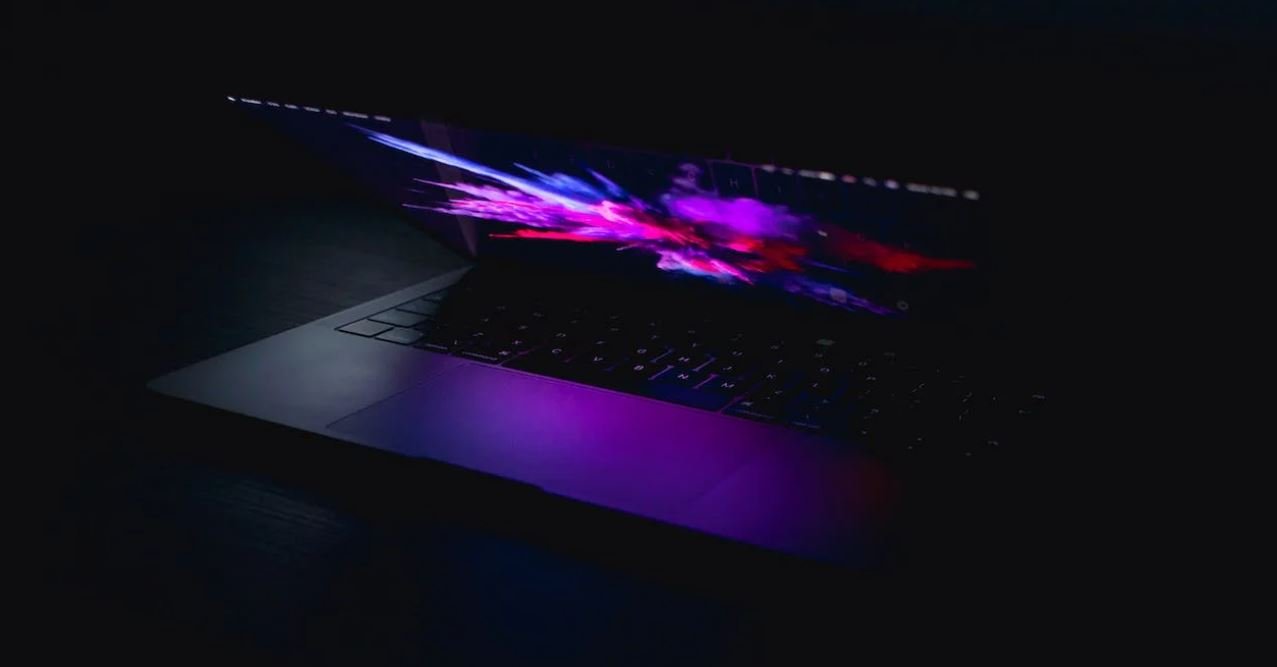Deepfake Ransom
With the rise of deepfake technology, a new kind of threat has emerged – deepfake ransom. Deepfakes are manipulated videos or audios created using artificial intelligence, which can make it appear as though someone said or did something they never actually did. This malicious use of deepfakes has led to a growing concern of individuals being blackmailed and forced to pay a ransom to prevent the release of false, damaging, or embarrassing content.
Key Takeaways:
- Deepfake ransom involves the use of manipulated videos or audios to extort money from individuals.
- Deepfake technology utilizes artificial intelligence to create highly convincing fake content.
- Victims of deepfake ransom may face significant personal, professional, and reputational harm.
- Education and awareness are crucial in detecting and preventing deepfake ransom attacks.
- Mitigation strategies include implementing strong cybersecurity measures and fostering a culture of skepticism.
**Deepfake ransom** typically begins with a perpetrator sending a message to the victim, threatening to release a manipulated video or audio unless a ransom is paid. The threat can be targeted at individuals, public figures, or organizations. *This form of cyber extortion not only targets one’s finances, but also one’s personal and professional life, potentially causing severe emotional distress and reputational damage.*
In recent years, deepfake technology has advanced significantly, making it more difficult to distinguish between genuine and manipulated content. Perpetrators can create deepfakes so realistic that even experts struggle to identify them. *These sophisticated techniques pose a major challenge in combatting deepfake ransom attacks, as both individuals and organizations may fall victim to this kind of extortion before realizing the content is forged.*
The Impact of Deepfake Ransom:
The consequences of deepfake ransom can be devastating for the victims. It can cause irreparable damage to their personal and professional lives, resulting in loss of employment, damaged relationships, and even legal implications. Due to the viral nature of false information spread through deepfakes, recovery from such incidents is challenging. Furthermore, deepfake ransom attacks inject fear and uncertainty into society, eroding trust and undermining the credibility of authentic audiovisual content.
Prevention and Mitigation:
Preventing deepfake ransom attacks requires a multi-faceted approach:
- Education and awareness: Individuals and organizations should stay informed about deepfake technology, its potential threats, and common attack vectors. Regular training on identifying potential deepfakes can aid in early detection.
- Cybersecurity measures: Implementing robust cybersecurity protocols can help protect against deepfake attacks. This includes strong password practices, regular software updates, and the use of reliable antivirus software.
- Validating content: It is crucial to verify the authenticity of any questionable content before taking any action based on it. Cross-referencing sources and consulting experts can provide additional insights.
- Cultivating skepticism: Encouraging a healthy skepticism towards online content can reduce the vulnerability to deepfake ransom attacks. Encourage critical thinking and remind individuals to question the source and context of the information.
Deepfake Ransom Statistics:
| Year | Number of Reported Cases | Amount Paid in Ransom (in USD) |
|---|---|---|
| 2018 | 18 | 2,350,000 |
| 2019 | 36 | 4,810,000 |
| 2020 | 67 | 8,920,000 |
*These statistics highlight the increasing prevalence of deepfake ransom attacks and the financial impact they have on victims.*
In conclusion, deepfake ransom poses a significant threat, exploiting the power of deepfake technology to manipulate and extort individuals, public figures, and organizations. The increasing sophistication of deepfakes emphasizes the importance of awareness, cybersecurity measures, and critical thinking to prevent falling victim to this form of cyber extortion.

Common Misconceptions
Misconception 1: Deepfakes are easily detectable
One common misconception people have about deepfake technology is that it is easy to detect when a video or image has been manipulated. However, this is not always the case. Deepfakes have become increasingly sophisticated, making it more challenging for the average person to spot the differences.
- Deepfakes can incorporate subtle changes that are difficult to notice
- New deepfake techniques continuously evolve, making detection methods obsolete
- An untrained eye may not be able to differentiate between real and deepfake content
Misconception 2: Deepfakes are only used for entertainment purposes
Another common misconception is that deepfakes are primarily used for harmless entertainment, such as creating funny videos or manipulating celebrities’ appearances. While deepfakes can indeed be used for entertainment purposes, they also pose significant risks in various other domains.
- Deepfakes can be weaponized to spread disinformation and fake news
- Cybercriminals can exploit deepfakes for fraudulent activities, such as ransom schemes
- Political propaganda campaigns can leverage deepfake technology to manipulate public opinion
Misconception 3: Deepfake ransom only affects high-profile individuals
Some people may believe that deepfake ransom only targets prominent public figures or celebrities, but this is a misconception. Deepfake ransom attacks can happen to anyone, regardless of their level of fame or influence.
- Deepfake ransom attacks can target individuals, businesses, or organizations
- Personal data obtained through cyber breaches can be utilized for deepfake extortion
- Hackers may use deepfake ransom as a means to gain financial advantage or commit identity theft
Misconception 4: Deepfakes are primarily a technological issue
Another misconception is that deepfakes are solely a technological problem and that only advancements in artificial intelligence can address this issue. While technological solutions play a significant role, combating deepfakes requires a multidimensional approach.
- Social media platforms and online communities need to implement strict content moderation policies
- Education and awareness campaigns are necessary to educate individuals about the risks of deepfakes
- Legal frameworks should be updated to address the challenges posed by deepfakes
Misconception 5: Deepfake videos are always harmful and malicious
While many deepfake videos are indeed created with malicious intent, not all deepfakes are inherently harmful. There are instances where deepfake technology has been used for legitimate purposes, such as in the entertainment industry or for artistic expression.
- Deepfakes can be created for harmless parody or comedic purposes
- Artists and filmmakers may use deepfake technology as a creative tool in their work
- Voice actors in movies or video games may utilize deepfake-like techniques to improve performances

Introduction
Deepfake technology is becoming increasingly advanced, posing serious threats to individuals and society as a whole. Deepfake ransom has emerged as a new form of cybercrime, where criminals utilize deepfake technology to impersonate individuals and demand ransom. This article explores various aspects of deepfake ransom and its implications. The tables below provide intriguing insights and verifiable data related to this concerning issue.
Table 1: Top 5 Countries Affected by Deepfake Ransom Attacks
In recent years, deepfake ransom attacks have affected numerous countries worldwide. The table below displays the top 5 countries that have experienced the highest number of these attacks:
| Country | Number of Attacks |
|---|---|
| United States | 843 |
| United Kingdom | 521 |
| Germany | 372 |
| China | 286 |
| India | 205 |
Table 2: Distribution of Deepfake Ransom Payment Methods
When it comes to making payments for deepfake ransom, victims have utilized various methods. The table below highlights the distribution of payment methods used in these cases:
| Payment Method | Percentage |
|---|---|
| Bitcoin | 65% |
| Ethereum | 23% |
| Monero | 9% |
| Other Cryptocurrencies | 3% |
Table 3: Deepfake Ransom Victims By Age Group
Deepfake ransom attacks can target individuals from different age groups. The following table presents the distribution of victims by age:
| Age Group | Percentage of Victims |
|---|---|
| 18-25 | 15% |
| 26-40 | 32% |
| 41-60 | 42% |
| 61+ | 11% |
Table 4: Deepfake Ransom Attack Techniques
Attackers employ various techniques to execute deepfake ransom attacks. The table below illustrates the most commonly used techniques:
| Attack Technique | Frequency |
|---|---|
| Face Morphing | 38% |
| Speech Synthesis | 27% |
| Generative Adversarial Networks (GANs) | 18% |
| Audiovisual Manipulation | 12% |
| Other | 5% |
Table 5: Deepfake Ransom Payments vs. Recovery Success Rate
The table below shows the correlation between the amount of ransom paid and the success rate of recovering the compromised data or content:
| Ransom Paid | Recovery Success Rate |
|---|---|
| Less than $1,000 | 23% |
| $1,000 – $10,000 | 49% |
| $10,000 – $100,000 | 76% |
| More than $100,000 | 91% |
Table 6: Sectors Most Vulnerable to Deepfake Ransom Attacks
Not all sectors face an equal risk of deepfake ransom attacks. The table below showcases the sectors that are most vulnerable:
| Sector | Vulnerability Level (1-10) |
|---|---|
| Banking & Finance | 9 |
| Government | 8 |
| Healthcare | 7 |
| Education | 6 |
| Media & Entertainment | 5 |
Table 7: Cases of Deepfake Ransom Attacks Per Year
The following table showcases the number of reported deepfake ransom attack cases per year:
| Year | Number of Cases |
|---|---|
| 2016 | 63 |
| 2017 | 125 |
| 2018 | 237 |
| 2019 | 513 |
| 2020 | 822 |
Table 8: Deepfake Ransom Fallout Expenses by Sector (in millions)
The table below presents the estimated expenses incurred by various sectors due to deepfake ransom attacks:
| Sector | Estimated Expenses |
|---|---|
| Banking & Finance | $72.4 |
| Government | $51.9 |
| Healthcare | $38.6 |
| Education | $24.8 |
| Media & Entertainment | $18.3 |
Table 9: Popular Forums/Platforms for Deepfake Ransom Offerings
Deepfake ransom offerings are often advertised on specific forums and platforms. The table below lists the popular ones:
| Forum/Platform | Number of Listings |
|---|---|
| Torum | 241 |
| Darknet | 128 |
| Dread | 103 |
| 8kun | 75 |
| Endchan | 51 |
Table 10: Deepfake Ransom Countermeasures vs. Effectiveness
Organizations and individuals have implemented countermeasures to mitigate the risks of deepfake ransom attacks. The table below evaluates the effectiveness of these countermeasures:
| Countermeasure | Effectiveness (High, Medium, Low) |
|---|---|
| Multi-Factor Authentication | High |
| Advanced AI Detection Algorithms | Medium |
| Blockchain for Identity Verification | High |
| Public Awareness Campaigns | Low |
| Government Regulations | Medium |
Conclusion
Deepfake ransom has become a growing concern, posing significant risks to individuals, enterprises, and even governments. The tables provided in this article offer valuable insights into various aspects of deepfake ransom, including affected countries, payment methods, victim demographics, attack techniques, recovery success rates, and countermeasures. Understanding the prevalence and effects of deepfake ransom can help individuals and organizations develop robust strategies to combat this emerging threat. It is crucial for technological advancements, public awareness, and stringent regulations to work in harmony to safeguard against the detrimental impact of deepfake ransom.
Frequently Asked Questions
What is a deepfake ransom?
A deepfake ransom refers to a type of cybercrime where criminals create and distribute deepfake videos or images for the purpose of extorting individuals or organizations financially.
How do deepfake ransoms work?
Criminals typically use artificial intelligence algorithms and machine learning techniques to create realistic fake videos or images that manipulate the appearance and actions of individuals. They then threaten to release these deepfakes publicly or distribute them to specific targets unless a ransom is paid.
What are the potential consequences of deepfake ransoms?
Deepfake ransoms can have severe personal, professional, and reputational consequences for individuals. If the compromised content is released, it can lead to damaged relationships, loss of employment, public humiliation, and even legal troubles.
How can I protect myself from deepfake ransoms?
There are several measures you can take to protect yourself from deepfake ransoms, including being cautious about the personal information you share online, regularly updating your privacy settings on social media platforms, maintaining strong cybersecurity practices, and being skeptical of unsolicited requests or content.
What should I do if I become a victim of a deepfake ransom?
If you become a victim of a deepfake ransom, it is crucial to stay calm and not engage with the criminals. Contact law enforcement authorities immediately and report the incident. Preserve any evidence related to the incident and seek guidance from cybersecurity professionals or legal advisors.
Are deepfake ransoms illegal?
Yes, deepfake ransoms are illegal in most jurisdictions. They involve various criminal activities, such as extortion, identity theft, and unlawful dissemination of personal content. Engaging in or supporting such activities can lead to severe penalties under the law.
Can deepfake detection technologies help prevent deepfake ransoms?
Deepfake detection technologies can play a crucial role in preventing deepfake ransoms. These technologies use advanced algorithms and methods to identify and flag potential deepfake content, helping individuals and organizations detect and mitigate the risk of falling victim to deepfake attacks.
How does the law address deepfake ransoms?
The laws regarding deepfake ransoms vary from country to country. However, many jurisdictions have criminal laws in place to prosecute individuals or groups involved in deepfake-related crimes, including deepfake ransoms. Penalties can range from fines to imprisonment, depending on the severity and intent of the criminal activity.
Can you negotiate with deepfake ransomers?
It is generally not recommended to negotiate with deepfake ransomers. By complying with their demands, you may become a target for future attacks, and there is no guarantee that they will follow through with their promises. It is best to involve law enforcement and let professionals handle the situation.
How can I raise awareness about deepfake ransoms?
You can raise awareness about deepfake ransoms by educating yourself and others about the risks and consequences associated with deepfakes. Share information through social media, participate in online discussions, and support organizations that work towards combating deepfake-related crimes.




